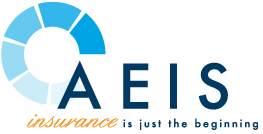Open Enrollment FAQs for Employers
This year open enrollment may be as busy ever. In the face of COVID-19 throughout the Bay Area and California, businesses are just trying to keep up. With smart solutions in hand, employers can avoid various problems that arise during open enrollment. But you may still have lingering questions regarding open enrollment and how to communicate with your employees.
At AEIS, we have seen it all. This year we are revealing 10 of the most asked open enrollment questions – and the answers to give you peace of mind.
- Who is an eligible dependent?
- Your legal spouse or domestic partner
- Your children or domestic partner’s children. This includes a natural child, stepchild or adopted child less than 26 years of age, unless the dependent is permanently disabled and qualifies to remain on the plan per the plan contract.
- Can I make benefit changes outside of open enrollment (OE)?
- If you have a Qualifying Life Event (QLE), then yes you can change your benefits or add dependents within 30 days from the qualifying event. If you do not request the change within the 30 days, you must wait until the next OE to amend your coverage. If you do NOT have a QLE, then you cannot change your benefits outside of OE.
- What is a Qualifying Life Event (QLE)?
- The following events qualify for a mid-year change in coverage:
- Marriage, divorce or legal separation
- Birth, adoption or placement for adoption
- Death of a dependent or ineligibility of a dependent
- Loss of coverage or change in your employment status or that of your spouse
- A qualified domestic relations order or similar court order
- Entitlement to Medicare or Medicaid
- The following events qualify for a mid-year change in coverage:
4. If my spouse loses their job outside of open enrollment, can I add them to my health care coverage?
- Yes, since your spouse will experience a QLE (change in spouse’s employment status and loss of coverage), you will have 30 days from the day they lose their job to enroll them in your group insurance plans.
5. What is the difference between HMOs, PPOs, EPOs and HDHPs with HSAs?
- HMO – Health Maintenance Organization
- A Health Maintenance Organization (HMO) is one of the most affordable types of health insurance. HMOs require you to select a primary care physician (PCP) within their network who you will see for regular checkups. Your PCP must give you a referral before you can see a specialist. There are no out of network benefits with an HMO.
- PPO – Preferred Provider Organization
- A Preferred Provider Organization (PPO) is one of the pricier premiums. This plan allows you to see specialists and out-of-network doctors without referrals. We recommend seeing in-network doctors because seeing out-of-network doctors will be more expensive, but it does give you flexibility.
- EPO – Exclusive Provider Organization
- An Exclusive Provider Organization (EPO) is like an HMO where they only cover in-network care, but generally have larger networks than a traditional HMO. They may or may not require referrals from your primary care physician.
- HDHP/HSA – High Deductible Health Plan (HDHP) with Health Savings Account (HSA)
- A High Deductible Health Plan (HDHP) has low premiums but much higher out-of-pocket costs. HDHPs can be an HMO, PPO or EPO. Employers often pair HDHPs with a Health Savings Account (HSA). An HSA is an account that allows you to put pre-tax money into it and pay for qualified medical expenses with it. The IRS limits the amount of money you contribute into an HSA on an annual basis. You can only contribute money into an HSA if you have an HDHP.
6. How do deductibles and out-of-pocket maximums work?
- Out-Of-Pocket Maximums: The most you pay during a policy period (usually by calendar year) before your health insurance begins to pay 100% of in-network and approved costs. This limit never includes your premium, balance-billed charges, or health care your health insurance doesn’t cover or is out-of-network. “Embedded out-of-pocket maximum” means an individual doesn’t have to meet the family out-of-pocket maximum in order for the health insurance to start paying 100% for that individual.
- Deductible: The amount you owe for health care services before your health insurance begins to pay. This does not include the amount that is taken out of your paycheck each month (your premium). Depending on your plan, the deductible may not apply to all services, so your health insurance may pay before the deductible is met. “Embedded deductible” means an individual doesn’t have to meet the family deductible in order for the coinsurance to start.
7. How do I make sure my preventive care visit is 100% covered?
- Due to the Affordable Care Act (ACA), preventative care is normally covered at 100%. The Federal mandated list of preventative testing is covered at 100%.
- Preventative care can include:
- One annual checkup and well-baby exams
- As a patient, something to keep in mind is if you go for your annual checkup and discuss or ask a health concern or issue you have been having, you may be charged for the visit. Your doctor may change the insurance carrier for a preventive annual checkup and a diagnostic checkup. For the diagnostic checkup you will be charged your office visit copay.
- Adult immunizations – yearly flu shot, pneumonia, and shingles depending on age
- Mammogram – usually every year after a certain age
- Colonoscopy – usually 1 per 10 years after a certain age
- Vaccinations – specific ones usually during childhood
- Please see your evidence of coverage for specific details on frequency and details of the above services and additional services or exclusions
- One annual checkup and well-baby exams
8. How do I get approval for a service or drug?
- Insurance carriers require some services and drugs that may require a pre-authorization with your attending physician. Traditionally with HMOs, all services and drugs must be authorized by your primary care doctor or specialist. Whereas PPOs, may have more flexibility.
9. Can I have other health coverage?
- Yes, you can be covered by another group health plan. This is called “dual coverage” and coordination of benefits (COB) will apply. If you’re enrolled in your company’s sponsored health plan, this coverage is primary for you and you must file your claims under this plan first. If some of your out-of-pocket costs are not covered, then you can file a claim under your secondary insurance. Important: If the other group health plan has the same carrier as yours “dual coverage” is not possible. If you are putting money into an HSA plan, please note that you cannot have another form of health coverage and still put money into your account.
10. Is there anything I can do if I have a doctor I like, but they’re out-of-network?
- You can speak with your doctor and ask them if they’d be willing to join the in-network with your insurance provider. If not and if you have a PPO, you’re still able to see that doctor as an out-of-network doctor, but you will either have to pay using your own money for their services or pay a significantly higher percentage in out-of-pocket costs. With HMOs and EPOs there are no out-of-network benefits, so if you see your doctor all costs will be covered 100% by you.
How AEIS Can Help You with Open Enrollment
With your most important questions answered you may still be uncertain what to do next. If you need help with your company’s open enrollment then reach out to Advanced Estate & Insurance Services, Inc.! We are located in the San Francisco Bay Area and partner with employers throughout California. We advise businesses with 2 to 500 employees on various types of insurance, including Medical, Vision, Dental, Disability, Life/AD&D, and Key Person and Buy-Sell Life Insurance. At AEIS, we value communication and we will support you through the entire open enrollment process. Our partnership will ensure that your company has all of its questions answered and taken care of. With over 30 years of experience, we take a holistic approach as we help you navigate the entire open enrollment process and beyond.
Disclaimer: Any information related to compliance or other subject matters in this blog is intended to be informational and does not constitute legal advice regarding any specific situation. The content of this blog is based on the most up-to-date information that was available on the date it was published and could be subject to change. Should you require further assistance or legal advice, please consult a licensed attorney.



